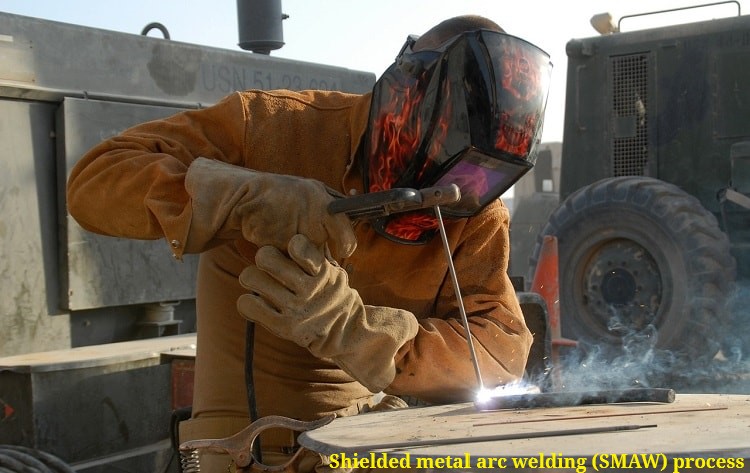DC welding machines welding (weldingwelder.blogspot.com)
Direct current for welding may be obtained from a generator set, a transformer rectifier
unit, or from an inverter.
dc welding Generators
A welding generator basically consists of an armature carrying a number of windings,
which rotate in a magnetic field produced by electromagnets (field coils). The passage
of the armature through this field induces a voltage through the windings. The current is
collected by carbon brushes running on a copper commutator at one end of the rotating
armature, and current will flow when the circuit is made. The armature is rotated by an
electric motor connected to an AC supply or by a diesel or petrol engine.
Welding generators are constructed to produce high current flow at comparatively
low voltages, which are suitable for welding. The current produced by the generator
should be steady and the voltage must not fluctuate during welding. A steady current
is maintained by compensation coils or reactors to absorb current fluctuations and
produce a more stable arc.
Generators can be driven using either petrol or diesel engines. These machines offer
the advantage of being portable and are popular for site work where line power is
unavailable. Some generators also provide auxiliary power which is useful for power
tools and lighting. welding (weldingwelder.blogspot.com)
Most modern portable power supplies utilise a highly efficient, high frequency alternator
and electronics to provide both AC and/or DC current at constant voltage or constant
current type outputs, suitable for use in a wide range of welding operations.
ac and dc welding Rectifiers
A rectifier is a device which permits current flow in one direction only and can therefore
be used to convert AC to DC. They can be supplied as an individual unit, but most
often are incorporated into the welding power source. The rectifier consists of metal
plates coated with a selenium compound, or of silicon diodes – each having the special
property of allowing the current to flow in one direction only. This means that when an
alternating voltage is applied, only the positive half-cycles are effective. This ‘half wave
rectification’ is undesirable and uneconomical, so the rectifier units are arranged in the
form of a bridge to achieve ‘full wave rectification’
ac and dc welding Transformer/rectifiers
Where both AC and/or DC welding current is desirable, eg for gas tungsten arc welding
(GTAW) or when DC is required from mains supply, eg for gas metal arc welding,
(GMAW) a transformer/rectifier is commonly selected. GMAW machines usually
provide DC output. Molten metal arc welding (MMAW) and GTAW machines usually
provide both AC and DC output. By means of a switch or by changing leads, the welder
can select either positive or negative polarity on the DC output.
Most GTAW machines are equipped with a high-frequency oscillator which provides
a high-frequency spark to enable the arc to be started without the electrode making
contact with the work. The high-frequency spark may be used simply to start the arc
when using DC or may be continuous to re-establish and maintain a steady arc with AC
dc welding Inverters
Inverters are fast taking over from other types of welding machines. These machines
are able to provide AC and smooth stable DC output at high-efficiency levels, and
feature lightweight construction.
The machines operate on either 240 V or 415 V AC input current and immediately
rectify this to DC using a series of high temperature diodes. This DC current is stored in
filter capacitors and then converted to an oscillated AC output in an oscillator stage at
a much higher frequency than the input supply. This high-voltage/high-frequency signal
is then fed into a high-efficiency transformer primary coil and high-frequency AC current
is produced in the secondary coil. The frequency can be anything from 5 kHz upward,
depending on the design and type of output required
Now that a high-frequency, low voltage, but high current power supply has been
created it can be used as high-frequency AC welding power for MMAW or GTAW of
aluminum. Alternatively the AC can then be rectified into DC current again and passed
through a second filtering system to produce a very smooth current flow. Welding
machines with an output frequency of around 5 kHz demonstrate a characteristic
whistling sound during welding.
Inverter welding machines have very good electronic controls that can regulate the
voltage and current. They are also very efficient and highly portable due to their
reduced weight.
The inverter cycle
1. Mains current rectified to DC and stored.
2. DC is oscillated to a high frequency.
3. High-frequency/high voltage AC is transformed to low voltage AC.
4. AC rectified to produce DC.
5. DC filtered to a smooth current.

